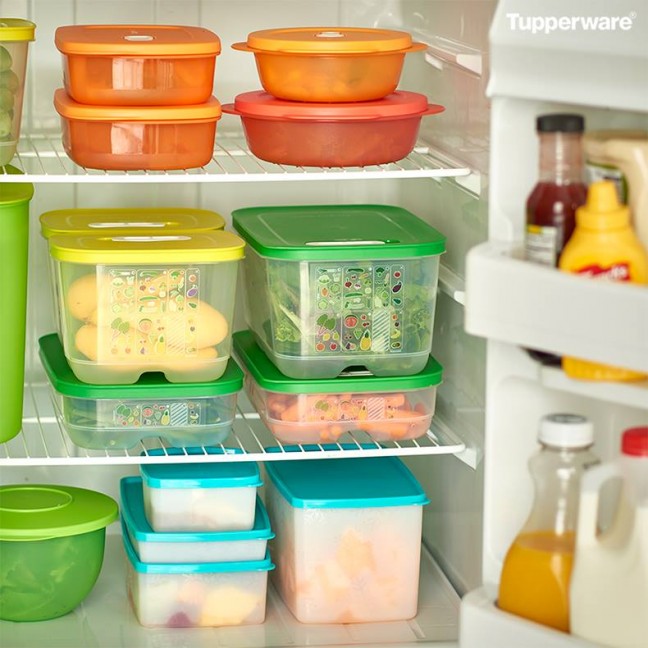
You normally keep 4 types of food in your refrigerator, which we throw away because they perish before we get the time to eat them: Fruits and vegetables, dairy produce, meats/ fish and alternatives, and finally the leftovers.
Let’s start with the ones we throw away the most, our fruits and vegetables: celery, tomatoes, carrots, green onion, asparagus, berries, mushrooms, lettuce, bean sprouts, spinach, strawberries, raspberries, blueberries, raisins, fresh herbs, bell peppers, cucumbers, broccoli, cauliflower, green beans, melons, etc.
Now, here are 3 simple questions:
- What is the total cost for your weekly groceries that is allocated to your fruits and veggies?
- How much of that total is actually thrown away because they perished too soon?
- What is the total value that an average family of 4 (2 adults- 2 kids) throws away, considering only fruits and vegetables?
Answer: An average family, will throw away about 500$ in perished fruits and vegetables in a year, which represents 10$/ week!
Solution = The FridgeSmarts!
Here are the key features of the FridgeSmart collection:
- FridgeSmart Containers are modular and stackable, like a set of Legos, to maximize space in your refrigerator. They allow you to stack your produce without crushing and smothering them.
- Containers are isolated for a more stable temperature even if the fridge door is open and closed often.
- When stacked in the refrigerator, translucent containers allow easy viewing of contents. Ideally stored at eye level.
- Each container features a transparent base and a seal containing the air-circulation system with venting holes and an EZ slider for a better control of humidity and gas levels.
- Containers are on legs to allow air circulation around the Fridge smarts so that stacking does not hinder ventilation.
- Easy-to-clean, built-in grid keeps contents away from moisture collected in the base and ensures airflow around produce, reducing spoilage.
Dairy produce
Organizing your refrigerator also means storing your dairy produce in the best containers in order to keep them fresher, longer, to portion them if necessary and to store in the right place to maximize the space in your fridge.
For example yogurt; bought in large containers is less expensive and generates less trash than the ones sold in individual portions. It would be beneficial to divide it into small airtight and watertight containers to be ready for consumption at any moment (in lunches, breakfasts etc.). These small containers can be stored on a shelf in the refrigerator with your applesauce, fruit salads and other individually prepared desserts. By buying yogurt in a 750g format you save money, you pollute less and you can prepare portions in order to fit your family’s needs.
Milk is less expensive when you buy the larger size. However, you don’t want to waste it, you need to drink it all before the expiration date. In order to keep your milk tasting fresh, I recommend purchasing two 2L Classic pitchers; they are airtight and slim, they can be stored in the fridge door. By keeping your milk in an airtight pitcher, it’ll remain tasting fresh and maintain its temperature longer. By buying milk in 4L formats rather than 2L formats, you can save at least 14$ per year.
Cheese is prone to drying out and mold if it’s not stored in the proper airtight container. The Freeze-it collection, as well as the sandwich-keepers (even if they were designed for sandwichs) are perfect for the job. Your cheese purchase easily add up to about 10$ per week. If you throw away only 1$ worth of cheese per week that totals up to 52$ at the end of the year.
Butter… It hardens and is prone to mold if not stored properly. But butter will also absorb any smell if your refrigerator, even the one fro its metallic wrapper and it will alter it’s taste. The Tupperware butter dish fits a whole pound of butter in its rectangular shape and it will fit in the designated area in your refrigerator.
Meats, fish and alternatives
They represent the wasted foods that hurt the most because they are the most expensive part of our groceries. On average, a family will spend between 50 and 60$ on meats and alternatives. If you throw out only 1/10 of it (and let’s be honest, it’s usually much more than that), it adds up to 260$ per year!!
Eggs; You can make this test at home, take a marker and write a large X on your egg and leave it in the refrigerator for 24 hours. When you break the shell, you will see just how porous an eggshell really is. If order to keep your eggs tasting fresh, keep them in an airtight containers to avoid them drying out and so their taste isn’t affect by anything else in your refrigerator.
Tofu, just like your marinades, is best kept in an airtight container, like the square pick-a-deli in order to keep it fresh longer.
As for Cold cuts, the stackable set not only helps to keep them fresher longer, but they also make for compact and practical storage. No more dried out or viscous cold cuts!
Chicken, beef, pork and fish should always be frozen to maximize their conservation time, up until the eve of their consumption. Thus avoiding the frustration of throwing them out. Once the meat is thawed, it’s important to place it in the refrigerator (in a square or rectangle container to maximize storage space) portioned accordingly to the recipe that you are about to prepare (in order to minimize the bacteria transmission between both used and unused portions of meat).
Beverages / Juice:
You can save a lot of money if you buy your juice from concentrated cans or if you make it fresh from home. You can dilute it to your taste and store it on the fridge door in an Impression 2L pitcher or on a shelf in a Classic 4l Pitcher. If your family drinks on average 4L of juice per week, you can save at least 52$ per year by making your juice from concentrate.
The leftovers
We keep them to avoid throwing food out, we like to use them in the lunch box, but the next day we get bored and want variety. And then the day after that we forget that we even have them. Then we come home with new groceries 2 days later and we push everything in front of the leftovers. Tip: Place your leftover food in our Vent N’Serve containers and send them to the freezer. Take them out of the freezer 24 hours before consumption and place in your refrigerator. Simply reheat in the microwave oven and enjoy. You could even take them out of the freezer and send the directly to the microwave for reheating without need to let thaw first! This way we’ll never throw out a leftover again!




